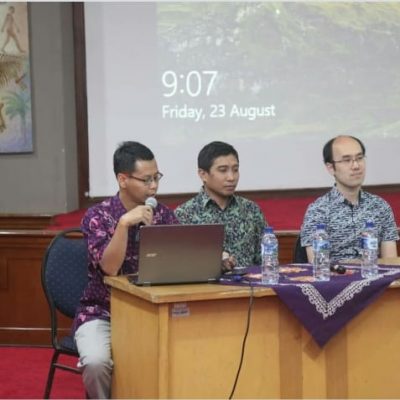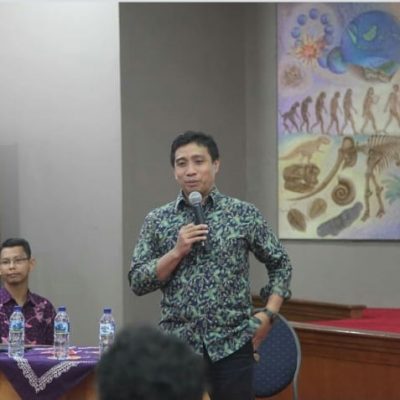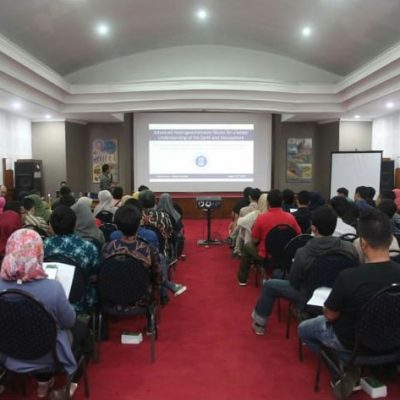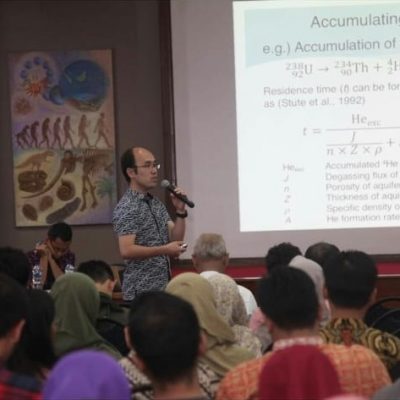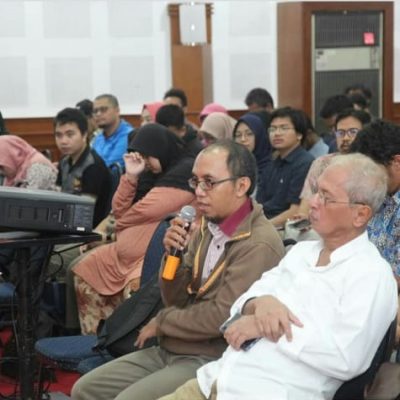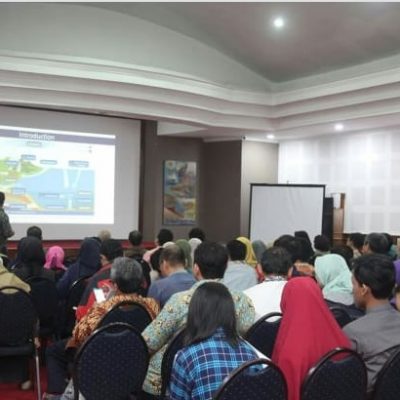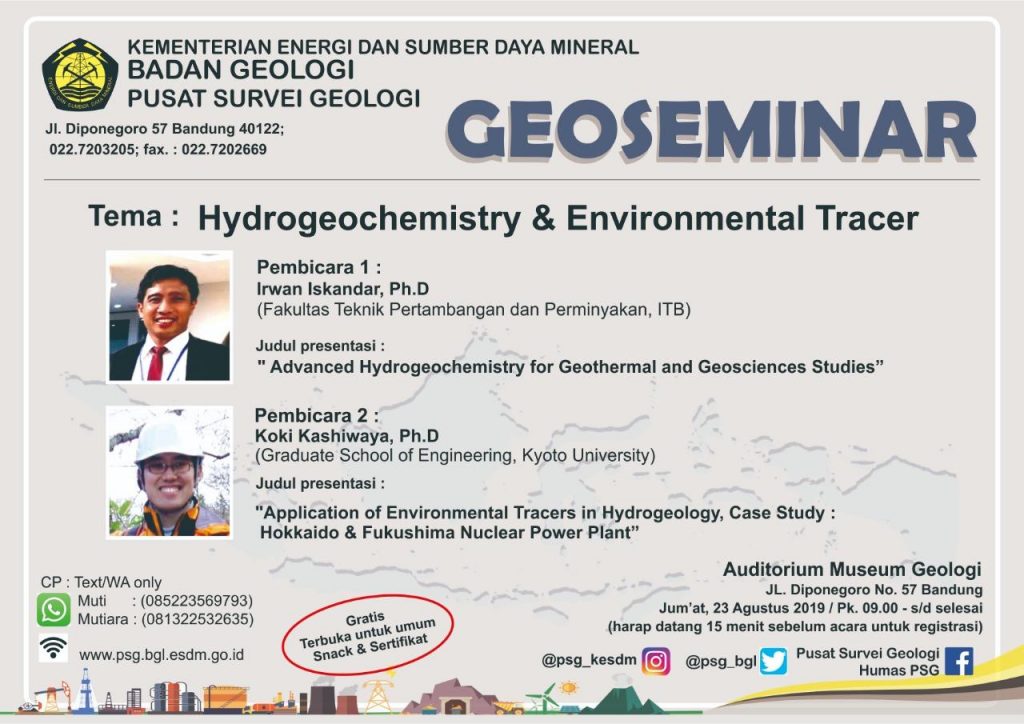Geoseminar oleh Pusat Survey Geologi
On Friday 23 August 2019, a geoseminar event was held by the Geological Survey Center which was located at the Geological Museum Auditorium, Jl Diponegoro No 57 Bandung. Lecturer at the Earth Resources Exploration Group, Irwan Iskandar, P.hD, together with researchers from Kyoto University, Koki Kashiwaya, P.hD., had the opportunity to present the results of research related to Hydrogeochemistry and Environmental Tracers. The event which took place from 09.00 to 11.00 attracted many enthusiasts, who came from various agencies such as the Geological Agency, ITB, BATAN, LIPI and other related agencies.
The presentation was started by Mr. Irwan (as he is often called) with the presentation title Advanced Hydrogeochemistry Works for a better Understanding of the Earth and Atmosphere. The presentation included research and community service carried out by a team led by Mr. Irwan, related to research used in several regions of Indonesia, including groundwater tracking in the Kawasi area, Obi Island, through the concentration of rare earth elements (REE) and stable isotopes; the link between natural CO2 release across the Lembang fault line through a comprehensive study using various methods such as stable isotopes and radon gas concentration measurements along the fault zone; identify the source of the gas burst in Indramayu; complexity of stable isotope data in the Bandung and geothermal basins south of Bandung; as well as cross-scientific applications between biology and geochemistry to trace food sources of phytoplankton based on stable isotope characteristics.
The presentation was continued by Kashiwaya, P.hD who presented research entitled Application of Environmental Tracers in Hydrogeology, Case Study: Hokkaido & Fukushima Nuclear Power Plant. Research in the Horonobe area, North Hokkaido, aims to estimate the age of groundwater using tritium, helium-3, chlorine-36 and lumped parameter models. Continued exposure to spatial variations of tritium concentrations in groundwater after the nuclear eruption at Fukushima. This exposure is the result of studies that have been published in the Journal of Hydrology and Nature Scientific Reports. The presence of Kashiwaya, PhD in Bandung coincides with research collaboration involving the Earth Resources Exploration Group, Kyoto University and several related agencies in geothermal research in the BAGUS-SATREPS program which has been ongoing since 2015 and ends in 2020.
The Geological Museum auditorium was filled with visitors until the event ended. The following photos of the activities were taken from the Geological Survey Center Public Relations public page. (FATHER)
